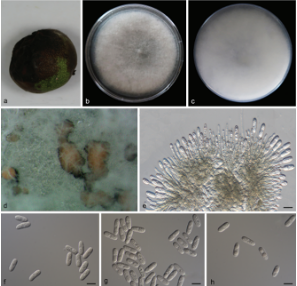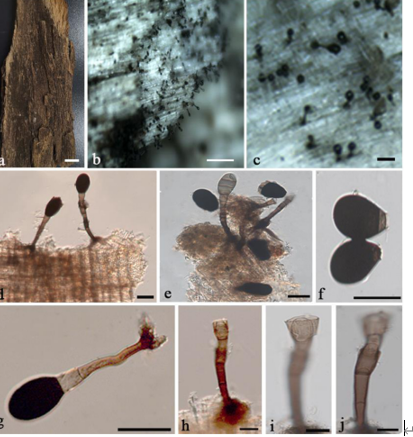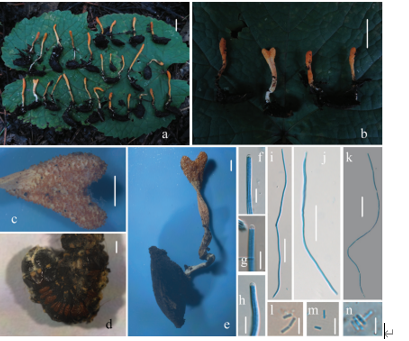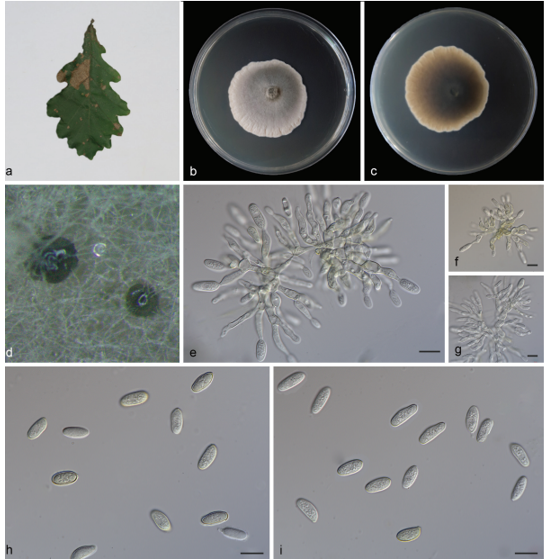Clitopilus brunneiceps S.P. Jian & Zhu L. Yang, sp. nov. 2020
MycoBank MB831308
Holotype: CHINA. YUNNAN PROVINCE: Nanjian YiAutonomous County, Caizi Mountain, scattered on soil in Pinus yunnanensis forest, alt. 2347 m, 15 Aug 2018, Y.J. Hou 95 (holotype KUN-HKAS104510).
Morphological description
Basidiomata clitocyboid, medium-sized. Pileus 30–45 mm wide, plano-convex to slightly concave or concave; surface brownish gray (3D1) at center, gray (3C1–B1) on the edge or uniformly gray (4B1), usually smooth, but sometimes squamose; margin incurved, usually even; context 3–5 mm thick, whitish (KUN-HKAS59712). Bars = 2 μm. 2A1) to chalk white (1A1). Lamellae decurrent, yellowish white (1A2) to slightly yellowish pink (6A2–3), somewhat crowded, edges entire and concolorous, lamellulae numerous. Stipe 20–30 × 5–6 mm, eccentric, equal; surface yellowish white (2A1–2) to grayish white (1B2), fibrillose or obscurely striate; the base often with white (1A1) mycelium. Odor unrecorded.
Basidiospores 8–12(–13) × 5–7(–8) μm, Lm × Wm = 9.65 (± 0.9) × 6 (± 0.5) μm, Q = (1.11–)1.13–2.03(–2.07) (Qavg = 1.63 ± 0.21) [91/4/4], hyaline, subfusiform to pileal trama composed of hyaline, filamentous or oblong hyphae, 5–22 μm wide. Stipitipellis a cutis composed of compactly arranged, thin-walled, hyaline hyphae, 3–7 μm wide. Caulocystidia absent. Clamp con-nections absent.
Habitat: on soil in Pinus yunnanensis forest.
Distribution: southwest, central, and northeast China
GenBank Accession: ITS MN061295; 28S MN065684; rpb2 MN148123; tef1 MN166234; atp6 MN133737
Notes: In sect. Clitopilus, C. brunneiceps is also similar to C. griseobrunneus T.J. Baroni & Halling, C. paxilloides Noordel., and C. ravus W.Q. Deng & T.H. Li. Clitopilus griseobrunneus is reported from Costa Rica and distinguished from C. brunneiceps by the larger pileus (30–70 mm), larger basidiospores, and the presence of caulocystidia (Baroni and Halling 2000). Clitopilus paxilloides, originally described from Norway, has a graybrown pileus with darker spots on the surface and a tapered stipe (Noordeloos 1993). Clitopilus ravus is similar to C. brunneiceps, but the former has larger basidiospores with only 4–5 distinct longitudinal ridges (Deng et al. 2013b).
Reference: Si-Peng Jian, Tolgor Bau, Xue-Tai Zhu et al. (2020): Clitopilus,Clitocella, and Clitopilopsis in China
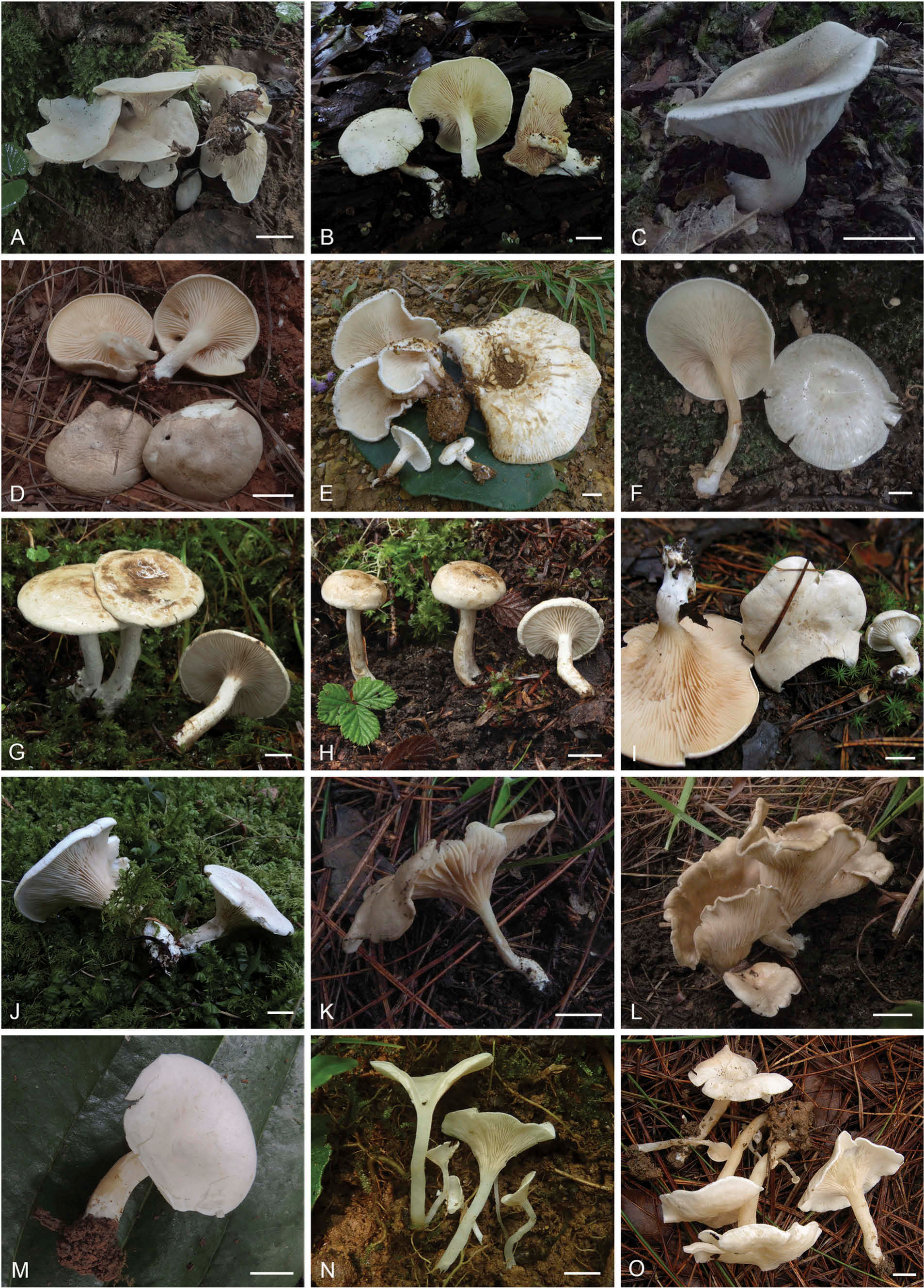
Basidiomata of Clitopilus. A–B. Clitopilus amygdaliformis (A. KUN-HKAS87950. B. KUN-HKAS81125, epitype). C–D. Clitopilus brunneiceps (C. KUN-HKAS80211. D. KUN-HKAS104510, holotype). E–F. Clitopilus crispus (E. KUN-HKAS104507. F. KUN-HKAS90508). G– H. Clitopilus fusiformis (G. KUN-HKAS104513. H. KUN-HKAS104514). I–J. Clitopilus prunulus (I. HMJAU 4521. J. KUN-HKAS96158, epitype). K–L. Clitopilus rugosiceps (K. KUN-HKAS73232, holotype. L. KUN-HKAS57003). M–O. Clitopilus sinoapalus (M. KUNHKAS83831. N. KUN-HKAS77037. O. KUN-HKAS101191, holotype). Bars = 10 mm.


